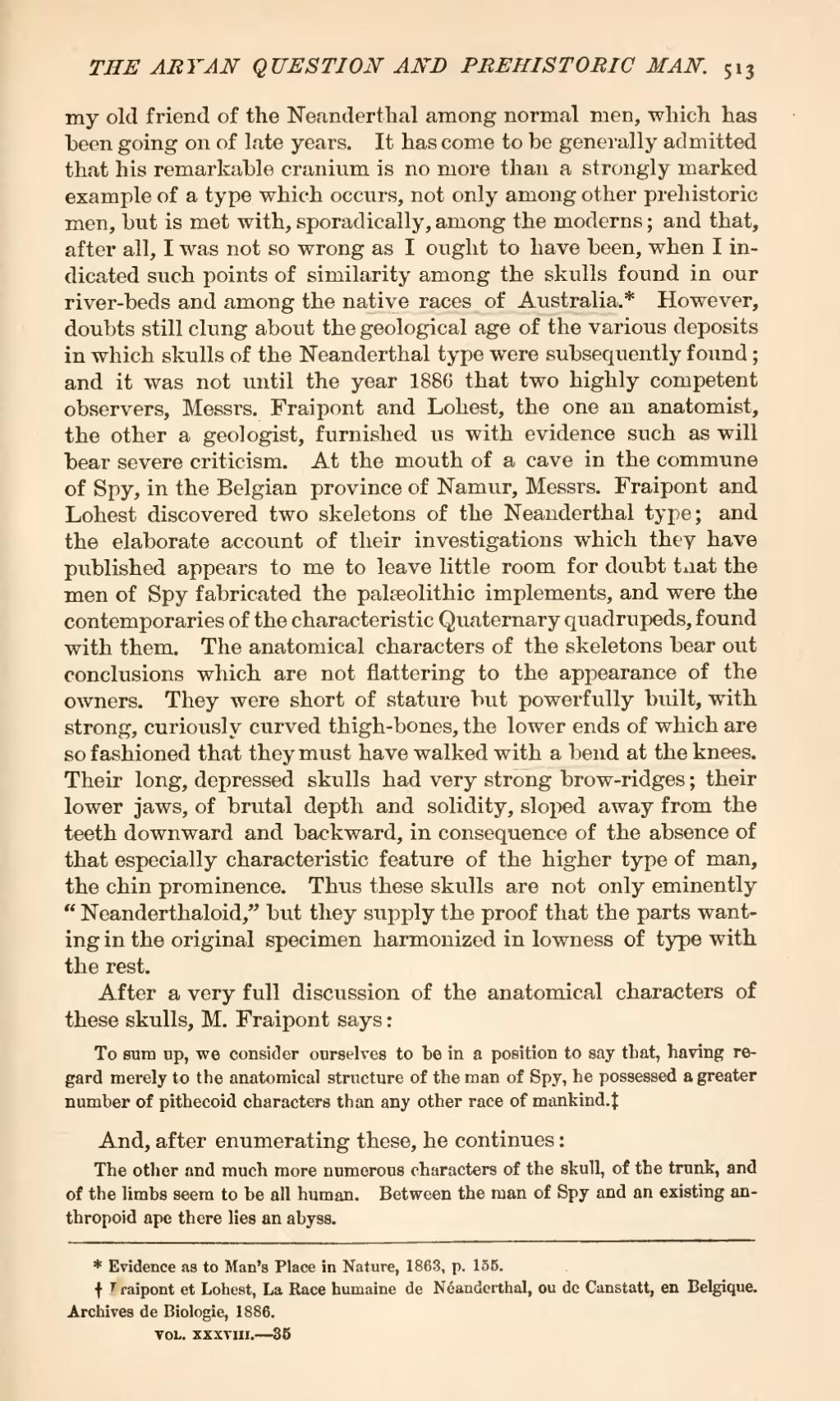my old friend of the Neanderthal among normal men, which has been going on of late years. It has come to be generally admitted that his remarkable cranium is no more than a strongly marked example of a type which occurs, not only among other prehistoric men, but is met with, sporadically, among the moderns; and that, after all, I was not so wrong as I ought to have been, when I indicated such points of similarity among the skulls found in our river-beds and among the native races of Australia.[1] However, doubts still clung about the geological age of the various deposits in which skulls of the Neanderthal type were subsequently found; and it was not until the year 1886 that two highly competent observers, Messrs. Fraipont and Lohest, the one an anatomist, the other a geologist, furnished us with evidence such as will bear severe criticism. At the mouth of a cave in the commune of Spy, in the Belgian province of Namur, Messrs. Fraipont and Lohest discovered two skeletons of the Neanderthal type; and the elaborate account of their investigations which they have published appears to me to leave little room for doubt that the men of Spy fabricated the palæolithic implements, and were the contemporaries of the characteristic Quaternary quadrupeds, found with them. The anatomical characters of the skeletons bear out conclusions which are not flattering to the appearance of the owners. They were short of stature but powerfully built, with strong, curiously curved thigh-bones, the lower ends of which are so fashioned that they must have walked with a bend at the knees. Their long, depressed skulls had very strong brow-ridges; their lower jaws, of brutal depth and solidity, sloped away from the teeth downward and backward, in consequence of the absence of that especially characteristic feature of the higher type of man, the chin prominence. Thus these skulls are not only eminently "Neandertkaloid," but they supply the proof that the parts wanting in the original specimen harmonized in lowness of type with the rest.
After a very full discussion of the anatomical characters of these skulls, M. Fraipont says:
And, after enumerating these, he continues:

